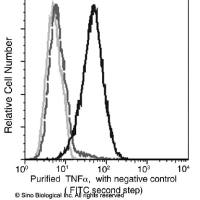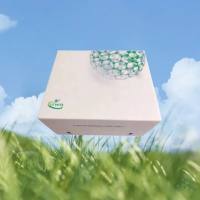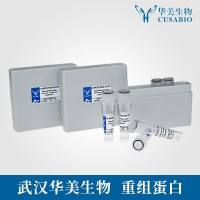Immunofluorescence and Fluorescent In Situ Hybridization in Mouse Fibroblasts and Embryonic Stem Cells
互联网
Introduction
Techniques routinely used in our lab for analysing the X-inactivation process in differentiating ES cells are described. We focus particularly on chromatin changes (histone modifications, protein association...) during X inactivation, using immunofluorescence (IF) combined with RNA FISH or DNA FISH on interphase nuclei. These should provide a tool for defining potential causal relationships between different events not only during X inactivation but also during the establishment of other patterns of gene activity.
The main purpose of a combined IF and FISH analysis is, on the one hand, to preserve nuclear architecture and the antibody's epitope as far as possible but, on the other hand, to allow the penetration of the FISH probe for detection of nuclear transcripts, gene location or chromosome territories. The optimal conditions for IF are usually poorly compatible with those for FISH. We have therefore tested a variety of methods and conditions and we describe here those that we find optimal for the immuno-detection of histone modifications combined with RNA or DNA FISH on mouse fibroblasts or embryonic stem cells. For more details, the reader is referred to Chaumeil et al ., 2002 and Chaumeil et al ., 2004.
Back to top
Procedure
Immunofluorescence
Numerous methods involving a variety of fixation and permeabilization techniques are available for performing IF and the choice depends on cell type, epitope and antibody being used (Spector et al ., 1998).
- Culture undifferentiated or differentiating ES cells on gelatin-coated coverslips for at least 24-48 hours;
- Wash once in freshly prepared 1X PBS;
- Fix in freshly made, filter-sterile 3% paraformaldehyde/1X PBS for 10 minutes at RT or 4°C;
- Wash 3 times in 1X PBS for 5 minutes each;
- Permeabilize with freshly made 1X PBS/0.5% Triton X-100 (containing the RNAse-inhibitor, 2mM Vanadyl Ribonucleoside Complex, in case of a subsequent RNA-FISH) on ice for 3.5-5 minutes (see note 1);
- Wash 3 times in 1X PBS for 5 minutes each;
- Block in 1X PBS/1% BSA (Gibco) for 15 minutes at RT;
- Incubate with primary antibody diluted in 1X PBS/1% BSA (containing 0.4U/µl RNAGuard in case of a subsequent RNA-FISH) for 45 minutes at RT (or other conditions, see note 2) in dark, humid chamber;
- Wash at least 3 times in 1X PBS for 5 minutes each;
- Incubate with secondary antibody (diluted in same solution as aboved) for 40 minutes at RT in dark and humid chamber (see note 3);
- Wash at least 3 times in 1X PBS for 5 minutes each;
- DNA counterstaining (2 minutes in 1X PBS containing 0.2mg/ml DAPI);
- Wash twice in 1X PBS;
- Mount coverslip on a slide in glycerol based mounting medium.
RNA FISH
For a general description and discussion of RNA FISH protocols, the reader is referred to Spector et al ., 1998. Conditions for detection of cytoplasmic versus nuclear RNAs are different, and here we focus only on the detection of nuclear transcripts. To detect the primary transcripts of genes, genomic probes several kilobase pairs long should be used. Probes spanning introns and exons will detect both the processed mRNA and the primary transcript. Oligonucleotides within intronic sequences will be specific for the primary transcript (see Robert Singer's web site for more details on use of oligos as probes: http://singerlab.aecom.yu.edu/). For the detection of Xist RNA coating of the X chromosome in cis, or primary transcripts of X-linked genes, we have used several genomic DNA probes, spanning a minimum of 3 kb, labelled by nick translation or random priming, with success. An example of RNA FISH is shown in Figure 1.
Preparation of FISH probes
- DNA probes, to be used for RNA or DNA FISH, are labeled by nick translation using 1 to 2µg of DNA per 50µl of reaction and following manufacturer's instructions (see note 4);
- Approximately 0.1µg of probe (usually 5µl of a standard nick translation reaction of 50µl) is ethanol precipitated together with 10µg of salmon sperm per 18x18mm coverslip (see comment 1);
- Perform two washes of the pellet in 70% ethanol (to remove unincorporated nucleotides);
- The pellet is resuspended thoroughly in formamide (5µl per coverslip), by pipetting and incubating at 37°C if necessary;
- Denature the probe for 7 minutes at 75°C;
- Add 5µl of 2X hybridization buffer per coverslip (see stock solution section). Mix well and keep on ice (probe can be kept on ice for up to 30 minutes), while coverslips are being prepared for the FISH step (see comment 2).
RNA FISH
- Culture ES cells on gelatin-coated glass coverslips or slides;
- Wash in freshly made, RNAse-free 1X PBS;
- Permeabilize in freshly made CSK (Cytoskeletal) buffer/0.5% Triton X-100 containing an RNAse inhibitor (2mM Vanadyl Ribonucleoside Complex) on ice for 5-7 minutes (see note 1 and note 5 and comment 3 and comment 4);
- Fix in sterile and freshly made 3% Paraformaldehyde/1X PBS for 10 minutes at RT;
- Wash twice in 70% ethanol for 5 minutes each (see note 6);
- Dehydrate in 80%, 95%, 100% ethanol, for 3 minutes each. Remove coverslip from 100% ethanol and allow to air dry (see comment 5);
- Deposit the denatured probe (avoiding air bubbles) onto RNAse-free glass slide and then place coverslip onto the drop, cell-side down;
- Hybridization overnight at 37°C in a dark and humid chamber (made using paper tissues soaked in 50% formamide/2xSSC) (see note 7);
- Wash three times in 50% formamide/2X SSC (adjusted to pH 7.2) for 5 minutes each at 42°C (see comment 6);
- Wash three times in 2X SSC for 5 minutes each at 42°C;
- DNA counterstaining (2 minutes in 2X SSC containing 0.2mg/ml DAPI);
- Wash twice in 2X SSC for 5 minutes each;
- Mount the coverslips on a slide in glycerol-based mounting medium.
RNA FISH following immunofluorescence
When IF and FISH are to be combined, we prefer to perform IF (under RNAse-free conditions) prior to the FISH, as the formamide treatment during the FISH procedure is sometimes incompatible with preservation of the epitopes detected by some antibodies. An example of Xist RNA FISH combined with IF is shown in Figure 2.
Preparation of FISH probes (see RNA FISH section above)
IF - RNA FISH
- Follow IF protocol upto PBS washes after secondary antibody (no DAPI coloration);
- Post-fixation for 10 minutes at RT, using filter-sterile, freshly made 3% PFA/1X PBS;
- Wash twice in 2X SSC (freshly made from a sterile 20X stock) for 5 minutes;
- Hybridization and washes: see RNA FISH section above.
DNA FISH
For a general description and discussion of DNA FISH protocols, the reader is referred to Spector et al ., 1998.
Preparation of FISH probes
-
Preparation of the nick translation probe:
- FISH probe is labeled overnight (see RNA FISH section);
- Precipitation of 0.1µg of probe with 10µg of salmon sperm and 5µg of Cot-1 DNA per 18x18mm coverslip;
- Two washes of the pellet in 70% ethanol;
- Resuspension of the pellet in 5µl of formamide per coverslip at 37°C;
- Denaturation for 7 minutes at 75°C;
- Competition for 30 minutes to 1 hour at 37°C;
-
Addition of 5µl of hybridation buffer per coverslip (see RNA FISH section).
- For chromosome paint probes, we follow the supplier's recommendations (Cambio).
DNA FISH
- Culture ES cells on gelatin-coated glass coverslips or slides;
- Wash once in freshly made 1X PBS;
- Fix in filter-sterile, freshly made 3% Paraformaldehyde/1X PBS for 10 minutes at RT (see comment 7);
- Wash twice in 1X PBS for 5 minutes each;
- Permeabilize in freshly made 1X PBS/0.5% Triton X-100 on ice for 5-7 minutes (see note 1);
- Dehydrate the slides in 80%, 95%, 100% ethanol, for 3 minutes each;
- Air dry;
- Denature in 50% formamide/2X SSC (adjusted to pH 7.2) for 30 minutes at 80°C (see comment 8);
- Wash twice in ice-cold 2X SSC;
- Deposit denatured probe solution onto cells on slide (or place coverslip cell-side down onto probe on slide);
- Hybridize with the probe overnight at 42°C in a dark and humid chamber (paper tissues soaked in 50% formamide/2xSSC) (see note 7);
- Wash 3 times in 50% formamide/2X SSC (adjusted to pH 7.2) for 5 minutes each at 42°C;
- Wash 3 times in 2X SSC for 5 minutes each at 42°C;
- If a biotin-labelled probe (e.g. chromosome paint) is used, a detection step has to be included;
- Block in 4X SSC/0.1% Tween/5% BSA (Gibco) for 15 minutes at RT;
- Incubate in fluorescently labelled streptavidin or avidin diluted in blocking buffer for 40 minutes at RT in humid chamber;
- Wash 3 times in 2X SSC;
- DNA counterstaining (2 minutes in 2X SSC containing 0.2mg/ml DAPI);
- Wash twice in 2X SSC for 5 minutes each;
- Mount coverslip on a slide in glycerol based mounting medium.
DNA-FISH following immunofluorescence
The detection of DNA requires a DNA denaturation step which can destroy the immunofluorescence signal in some cases. Therefore, if the combination doesn't work properly, images should be recorded prior to the DNA FISH experiment using squared coverslips.
An example of IF combined with DNA FISH is shown in Figure 3.
Preparation of FISH probes - see DNA FISH section above
IF - DNA FISH
- Follow IF protocol upto PBS washes following secondary antibody detection (no DAPI coloration);
- Postfix in freshly made, sterile 3% PFA/1X PBS for 10 minutes at RT;
- Wash twice in 2X SSC (freshly made from a 20X sterile stock) for 5 minutes;
- Permeabilize in freshly made 0.1M HCl/0.7% Triton for 10 minutes on ice;
- Wash twice in 2X SSC for 5 minutes each;
- Denature in 50% formamide/2X SSC (adjusted to pH 7.2) for 30 minutes at 80°C (see note 8);
- Wash several times in ice-cold 2X SSC;
- Hybridize with denatured probe O/N etc: see DNA FISH section.
DNA FISH following RNA FISH
The detection of DNA requires a DNA denaturation step which can destroy the RNA FISH signal in some cases, rendering the simultaneous combination (on coverslips) impossible. Post-fixation (3% PFA / 1X PBS for 10 min at RT) of the RNA signal prior to the DNA-FISH can be performed; however, this post-fixation step can dramatically affect the efficiency of DNA denaturation. In these cases, it is possible to perform the RNA-FISH procedure first and to record the RNA FISH images prior to performing DNA FISH (on slides), using a microscope capable of tracking nucleus coordinates.
Simultaneous RNA - DNA FISH (on coverslips)
- Follow RNA FISH and DNA FISH sections for the preparation of the FISH probes (see note 9).
- Follow DNA FISH section for preparation of coverslips, denaturation and hybridization (see note 10).
Sequential RNA - DNA FISH (on slides)
- Follow RNA FISH section for the preparation of the FISH probe and preparation of slides (as coverslips).
- Record images and coordinates of nuclei on an appropriate microscope.
- Scratch off the nail polish.
- Wash off the mounting medium in 4X SSC / 0.2% Tween, 3 times at 42°C.
- Follow the DNA FISH section for preparation of FISH probes.
- RNase treat the samples at 37°C for one hour (1 U/ml RNase A (fermentas) + 10 U/ml (NEB) in 2X SSC).
- Denature in 70% formamide / 2X SSC (adjusted to pH 7.2) for 2-4 min at 75°C.
- Follow the end of the DNA FISH section (steps 9 to 20).
Back to top
Materials & Reagents
| 2X hybridization buffer |
(Storage at -20°C) 4X SSC 20% dextran sulfate 2mg/ml BSA (Biolabs) 40mM Vanadyl Ribonucleoside Complex (VRC) |
| mounting medium |
See Spector et al (1998). Store at -20°C, always keep in the dark and on ice when aliquoting. 90% glycerol 0.1X PBS 0.1% p-phenylenediamine, pH 9. (Should be "straw" colored - if it veers to purple or yellow, discard.) |
| CSK (Cytoskeletal) buffer |
Make up in sterile H2 O. PIPES can be added as powder and pH adjusted with NaOH. Filter, sterilise and store in aliquots at -20°C. 100mM NaCl 300mM sucrose 3mM MgCl2 10mM PIPES pH 6.8 |
Alexa secondary antibodies (including highly cross-adsorbed 2ary Abs) - Molecular Probes ™
BSA 7.5% - Invitrogen™ (Gibco®) 15260-037
BSA 100X - N. E. Biolabs® B9001S
Cot-1 mouse DNA - Gibco®/Invitrogen™ 18440-016
Coverslips 18x18mm (100) - ESCO (VWR 9611301)
Dextran sulfate - Sigma® 31403
Formamide - Sigma® F 5786
Gelatin 250g - Merck® (VWR 24360233)
Glycerol - Sigma® G5516
Mouse X-chromosome paint - Cambio 1187-XMB-02
Paraformaldehyde - RE/PURO 387507
PBS 10X 500ml - Sigma® D1408
P-phenylenediamine (1g) - Sigma® 27-515-8
RNA Guard (PHARMACIA) - Amersham™ 270815-01
Salmon sperm DNA (10mg/ml) - Boehringer™ (Mol.Biol. grade)
SpectrumGreen dUTP - Vysis® 6J9410
SpectumRed dUTP - Vysis® 6J9420
Slides Superfrost (50) - Menzel Gläser (VWR 8032-E01)
Triton®-X-100 - ICN 807423
Tween20 - Sigma® P9416
Vanadyl Ribonucleoside Complex (VRC) - N. E. Biolabs® S1402S
Nick Translation Kit - VYSIS® (Abbott 32-801300)
Water 500ml - Sigma® W3500
[1] [2] 下一页









